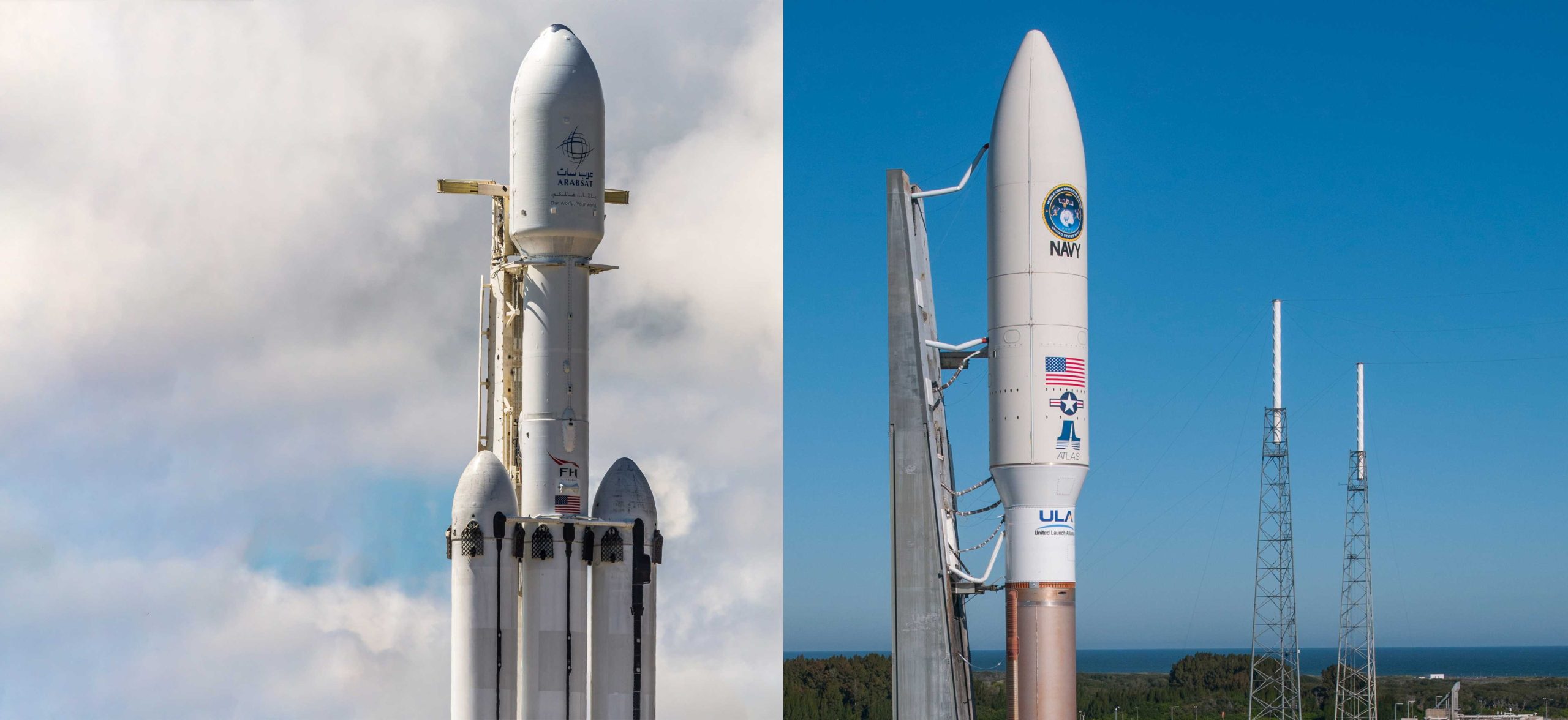
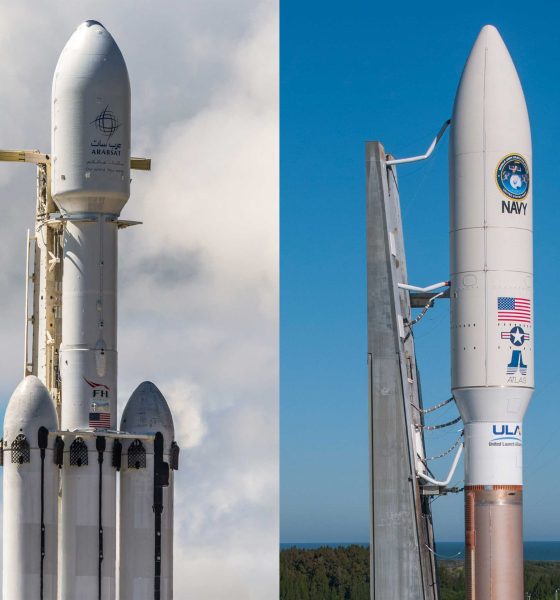
News
SpaceX may have signed a fairing agreement with ULA supplier RUAG (Update: no agreement)
According to unverified and speculative comments reportedly made to a member of the space industry by a RUAG spokesperson, the prominent aerospace supplier may have reached an agreement with SpaceX to manufacture a handful of larger payload fairings for future Falcon 9 and Heavy launches.
In the likely event that SpaceX is one of two contractors awarded a portion of several dozen US military launch contracts next year, the company will need to be able to cater to niche requirements, including accommodating unusually tall military satellites. Those satellites can be so tall that SpaceX’s own payload fairing – generally middle-of-the-pack relative to competitors’ offerings – may be too short, meaning that SpaceX will have to find ways around that minor shortcoming.
Update: Tim Chen has retracted his earlier comments and has stated that there is actually no agreement currently in place with SpaceX for RUAG to produce taller fairings out of its new Decatur, AL factory.
Additionally, ULA CEO Tory Bruno clarified that the company’s “[new fairing] has [ULA] intellectual property in its design and manufacture … [and] is currently planned only for use on Atlas and Vulcan”, meaning that any cooperation between SpaceX and RUAG would likely require a new production facility and a somewhat different fairing design.
“ULA’s new fairing, which is built in our factory in Decatur, has our intellectual property in its design and manufacture. This fairing is currently planned only for use on Atlas and Vulcan. You would want to ask RUAG about business they might have with their other customers.”
Tory Bruno, August 14th, 2019
Regardless of the veracity of these recent claims, it appears that SpaceX has three obvious responses at its disposal: design and build an entirely new variant of its universal Falcon fairing, purchase the necessary fairings from an established supplier, or bow out of launch contract competitions that demand it. The latter option is immediately untenable given that it could very well mean bowing out of the entire US military competition, known as Phase 2 of the National Security Space Launch program’s (NSSL; formerly EELV) Launch Services Procurement (LSP).
For dubious reasons, the US Air Force (USAF) has structured the NSSL Phase 2 acquisition in such a way that – despite there being four possible competitors – only two will be awarded contracts at its conclusion. The roughly ~30 launch contracts up for grabs would be split 60:40 between the two victors, leaving two competitors completely emptyhanded. In short, bowing out of the Phase 2 competition could mean forgoing as many as one or two-dozen contracts worth at least $1-2B, depending on the side of the 60:40 split.
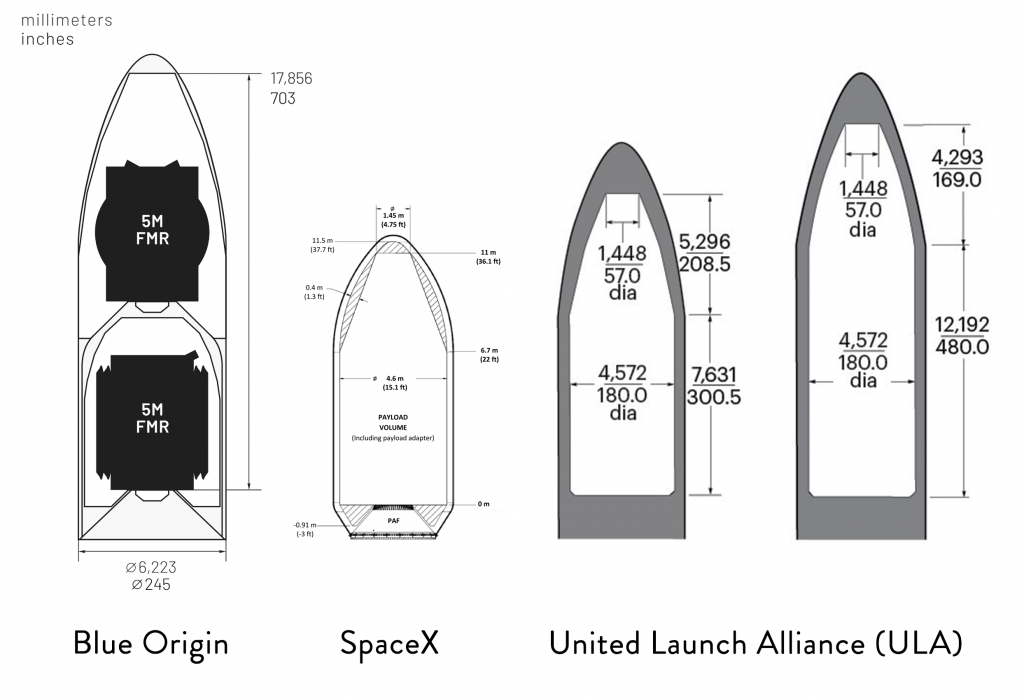
According to a handful of recent comments and developments, SpaceX has likely sided with the option of procuring taller fairings from an industry supplier. As it turns out, European company RUAG has effectively cornered the Western rocket fairing market, with SpaceX being the only Western launch company currently building its own fairings. RUAG builds fairings for both Arianespace’s Ariane 5 and Vega rockets and ULA’s Atlas V. Additionally, RUAG will build and supply fairings for both companies’ next-gen rockets – Arianespace’s Ariane 6 and ULA’s Vulcan – and builds fairings for a number of smallsat launch companies.
Comments made in June by a RUAG official confirmed that there was some semblance of a relationship between SpaceX and RUAG for the purpose of satisfying USAF needs for taller fairings, although the phrasing suggested that the cooperation was in its early stages and nothing had been solidified.
“In a June 12 letter to Smith, the company’s CEO Peter Guggenbach makes the case that legislation forcing access to suppliers is unnecessary in this case because RUAG does not have an exclusive arrangement with ULA and is willing to work with SpaceX or any other launch providers.
“For this competition, we are in the process of submitting or have submitted proposals to multiple prime contractors regarding launch vehicle fairings. In those agreements, we share technical data to support a prime contractor’s bid while protecting our intellectual property.”
RUAG vice president Karl Jensen told SpaceNews the company has a “significant partnership” with ULA but is looking to work with others too. “We have an offer to SpaceX,” he said. “We don’t know if they’ll accept it.”
SpaceNews, 06/13/2019
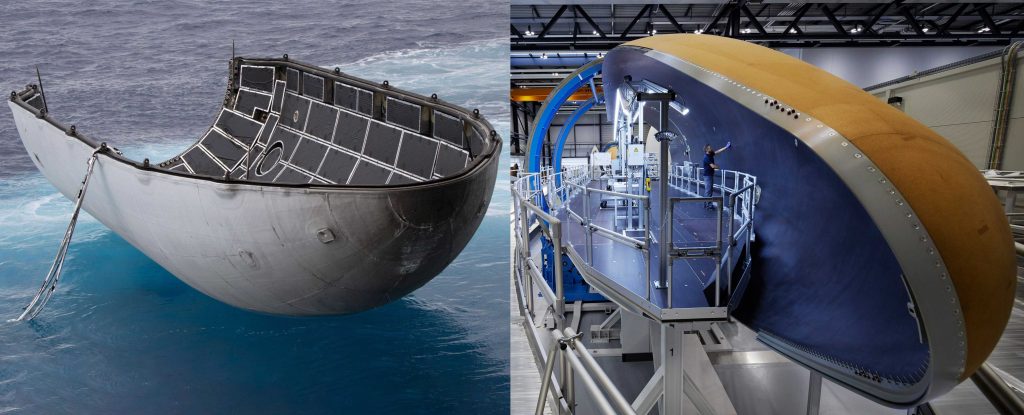
Interestingly, although ULA’s RUAG-built Atlas V fairing is slightly narrower than SpaceX’s 5.2m (17 ft) diameter fairing, Atlas V’s largest fairing is significantly taller, supporting payloads up to 16.5m (54 ft) tall compared to 11m (36 ft) for Falcon 9 and Heavy. Given that just a tiny portion of military spacecraft actually need fairings that tall, SpaceX is apparently not interested in simply modifying its own fairing design and production equipment to support a 20-30% stretch.
This likely relates in part to the fact that one of SpaceX’s three NSSL Phase 2 competitors – Northrop Grumman (Omega), Blue Origin (New Glenn), and ULA (Vulcan) – are guaranteed to receive hundreds of millions of dollars of development funding after winning one of the two available slots (60% or 40% of contracts). SpaceX, on the other hand, will receive no such funding while still having to meet the same stringent USAF requirements compete in LSP Phase 2. Of note, Congressman Adam Smith managed to insert a clause into FY2020’s defense authorization bill that could disburse up to $500M to SpaceX in the event that the company is one of Phase 2’s two winners.
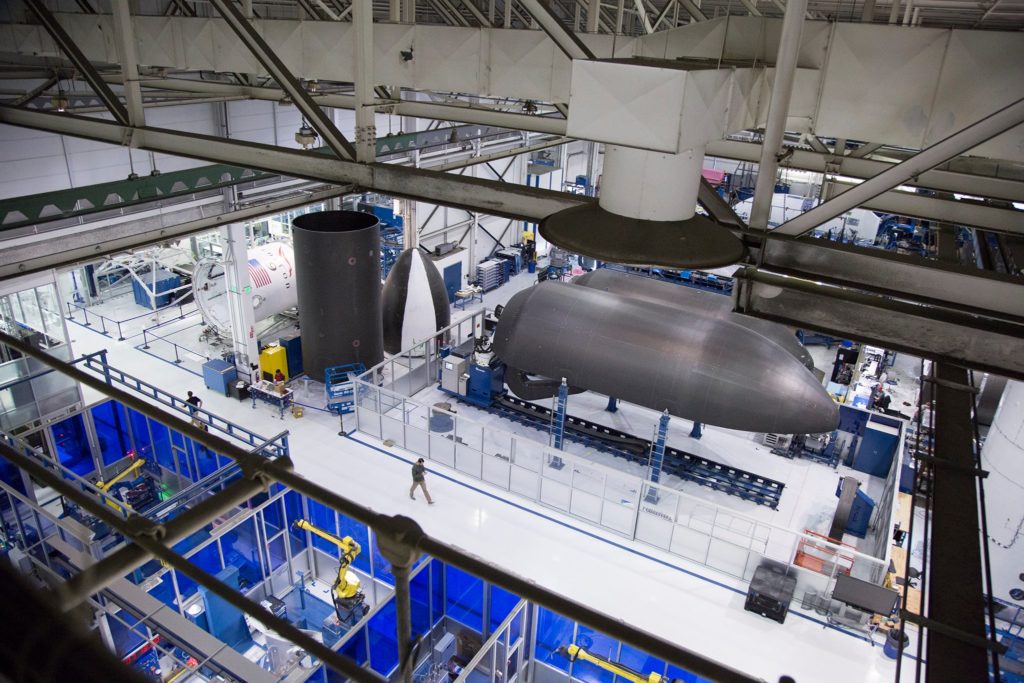
Despite this potential influx of infrastructure-focused funds, SpaceX may still be pursuing taller Falcon fairings from RUAG as a backup in the event that the company is not one of the two Phase 2 winners or is unable to use some of the $500M secured by Rep. Smith to develop its own stretched fairing.
On August 12th, SpaceX – along with Blue Origin, ULA, and NGIS – submitted bids for NSSL Phase 2 launch services, confirming that all four companies will indeed be in the running for contracts. The USAF is not expected to announce the results of this competition until Q2 2020.
Check out Teslarati’s Marketplace! We offer Tesla accessories, including for the Tesla Cybertruck and Tesla Model 3.

News
Tesla earns top honors at MotorTrend’s SDV Innovator Awards
MotorTrend’s SDV Awards were presented during CES 2026 in Las Vegas.

Tesla emerged as one of the most recognized automakers at MotorTrend’s 2026 Software-Defined Vehicle (SDV) Innovator Awards.
As could be seen in a press release from the publication, two key Tesla employees were honored for their work on AI, autonomy, and vehicle software. MotorTrend’s SDV Awards were presented during CES 2026 in Las Vegas.
Tesla leaders and engineers recognized
The fourth annual SDV Innovator Awards celebrate pioneers and experts who are pushing the automotive industry deeper into software-driven development. Among the most notable honorees for this year was Ashok Elluswamy, Tesla’s Vice President of AI Software, who received a Pioneer Award for his role in advancing artificial intelligence and autonomy across the company’s vehicle lineup.
Tesla also secured recognition in the Expert category, with Lawson Fulton, a staff Autopilot machine learning engineer, honored for his contributions to Tesla’s driver-assistance and autonomous systems.
Tesla’s software-first strategy
While automakers like General Motors, Ford, and Rivian also received recognition, Tesla’s multiple awards stood out given the company’s outsized role in popularizing software-defined vehicles over the past decade. From frequent OTA updates to its data-driven approach to autonomy, Tesla has consistently treated vehicles as evolving software platforms rather than static products.
This has made Tesla’s vehicles very unique in their respective sectors, as they are arguably the only cars that objectively get better over time. This is especially true for vehicles that are loaded with the company’s Full Self-Driving system, which are getting progressively more intelligent and autonomous over time. The majority of Tesla’s updates to its vehicles are free as well, which is very much appreciated by customers worldwide.
Elon Musk
Judge clears path for Elon Musk’s OpenAI lawsuit to go before a jury
The decision maintains Musk’s claims that OpenAI’s shift toward a for-profit structure violated early assurances made to him as a co-founder.

A U.S. judge has ruled that Elon Musk’s lawsuit accusing OpenAI of abandoning its founding nonprofit mission can proceed to a jury trial.
The decision maintains Musk’s claims that OpenAI’s shift toward a for-profit structure violated early assurances made to him as a co-founder. These claims are directly opposed by OpenAI.
Judge says disputed facts warrant a trial
At a hearing in Oakland, U.S. District Judge Yvonne Gonzalez Rogers stated that there was “plenty of evidence” suggesting that OpenAI leaders had promised that the organization’s original nonprofit structure would be maintained. She ruled that those disputed facts should be evaluated by a jury at a trial in March rather than decided by the court at this stage, as noted in a Reuters report.
Musk helped co-found OpenAI in 2015 but left the organization in 2018. In his lawsuit, he argued that he contributed roughly $38 million, or about 60% of OpenAI’s early funding, based on assurances that the company would remain a nonprofit dedicated to the public benefit. He is seeking unspecified monetary damages tied to what he describes as “ill-gotten gains.”
OpenAI, however, has repeatedly rejected Musk’s allegations. The company has stated that Musk’s claims were baseless and part of a pattern of harassment.
Rivalries and Microsoft ties
The case unfolds against the backdrop of intensifying competition in generative artificial intelligence. Musk now runs xAI, whose Grok chatbot competes directly with OpenAI’s flagship ChatGPT. OpenAI has argued that Musk is a frustrated commercial rival who is simply attempting to slow down a market leader.
The lawsuit also names Microsoft as a defendant, citing its multibillion-dollar partnerships with OpenAI. Microsoft has urged the court to dismiss the claims against it, arguing there is no evidence it aided or abetted any alleged misconduct. Lawyers for OpenAI have also pushed for the case to be thrown out, claiming that Musk failed to show sufficient factual basis for claims such as fraud and breach of contract.
Judge Gonzalez Rogers, however, declined to end the case at this stage, noting that a jury would also need to consider whether Musk filed the lawsuit within the applicable statute of limitations. Still, the dispute between Elon Musk and OpenAI is now headed for a high-profile jury trial in the coming months.
News
Tesla Giga Shanghai celebrates 5 million electric drive unit milestone
The milestone was celebrated by the company in a post on its official Weibo account.
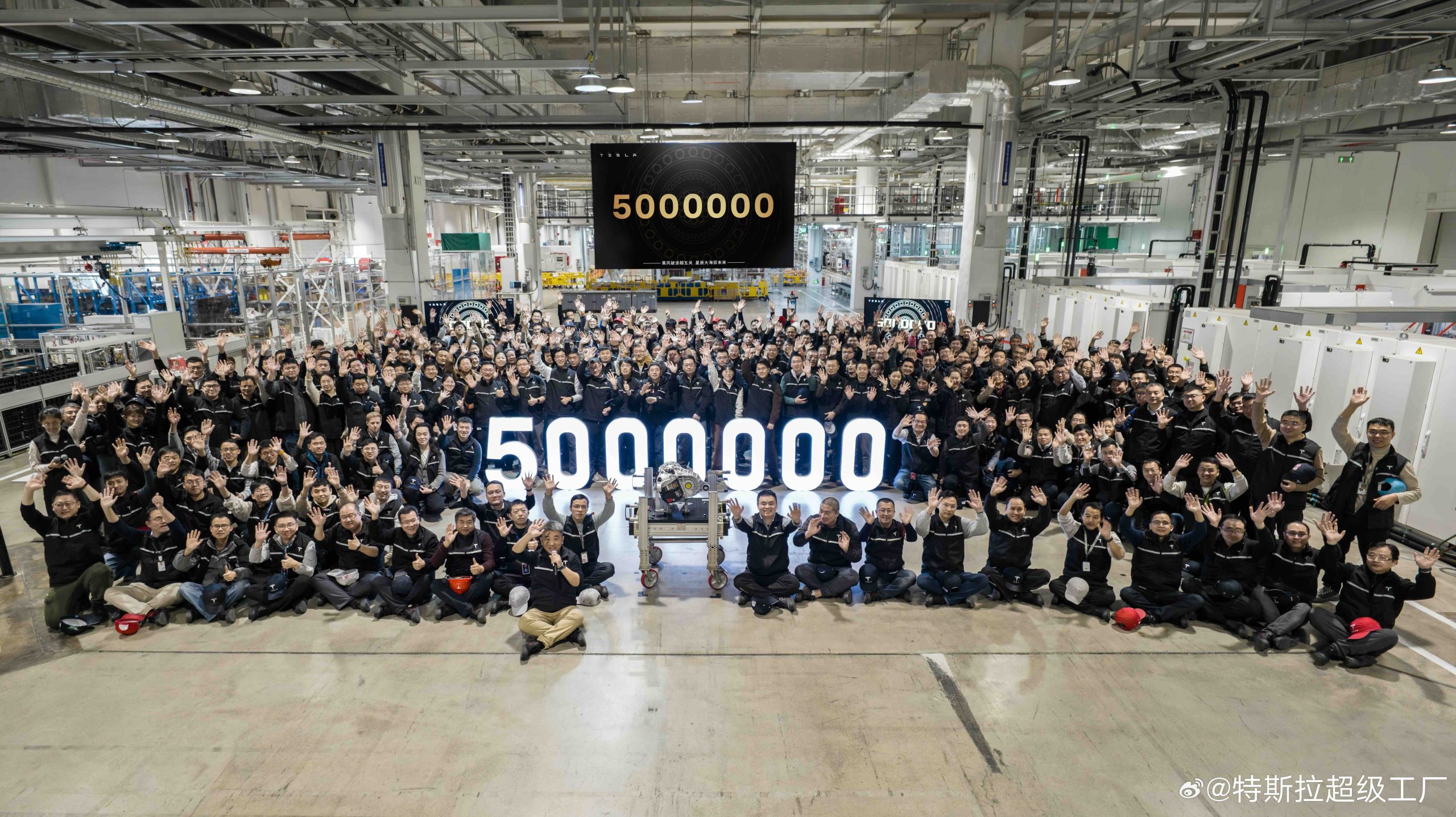
Tesla China has reached another manufacturing milestone at Gigafactory Shanghai, rolling out the facility’s 5 millionth locally produced drive unit.
The milestone was celebrated by the company in a post on its official Weibo account. In its post, the Giga Shanghai team could be seen posing with the 5 millionth drive unit.
Giga Shanghai’s major benchmark
The milestone drive unit was produced at Gigafactory Shanghai, which produces the Model Y and the Model 3. In a release, Tesla China noted that its three-in-one integrated electric drive system combines the motor, gearbox, and inverter into a single compact assembly. This forms a powerful “heart” for the company’s electric cars.
Tesla China also noted that its drive units’ integrated design improves energy conversion efficiency while reducing overall weight and complexity, benefits that translate into stronger performance, improved handling, and longer service life for its vehicles.
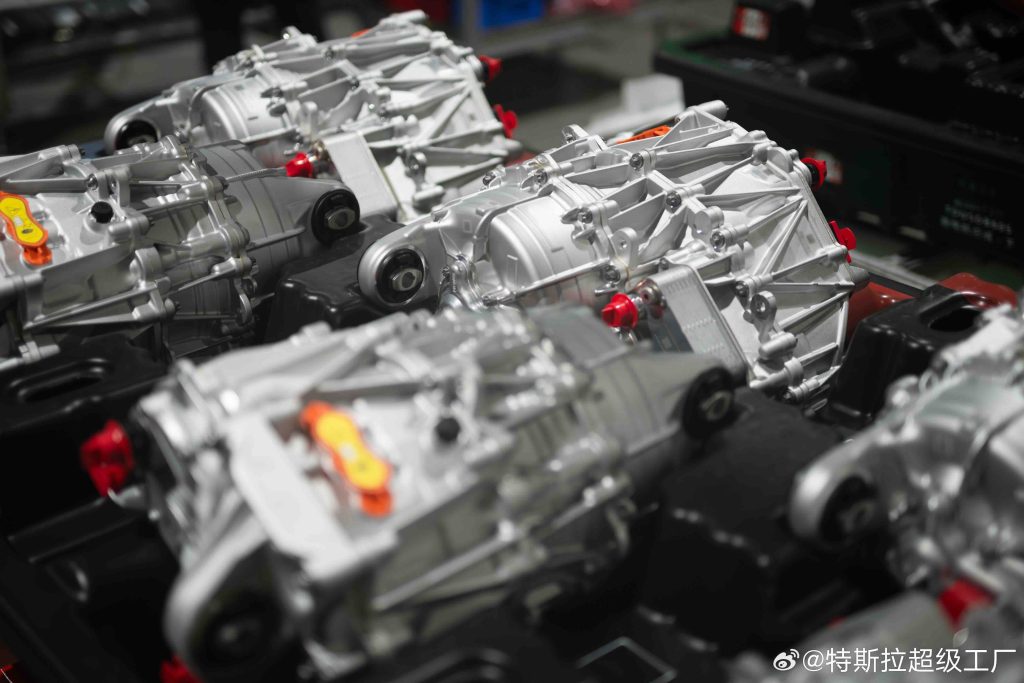
The new milestone builds on earlier achievements at the same site. In July 2024, Tesla announced that its 10 millionth electric drive system globally had rolled off the line at the Shanghai plant, making it the first self-produced Tesla component to reach that volume.
More recently, the factory also produced its 4 millionth China-made vehicle, a Model Y L. The factory has also continued hitting global production milestones, rolling out Tesla’s 9 millionth EV worldwide late last year, with the landmark vehicle being a Tesla Model Y.
Tesla China’s role
Construction of Giga Shanghai began in January 2019, with production starting by the end of that year. This made it the first wholly foreign-owned automotive manufacturing project in China. The facility began delivering Model 3 vehicles locally in early 2020 and added Model Y production in 2021. The plant is now capable of producing about 1 million vehicles annually.
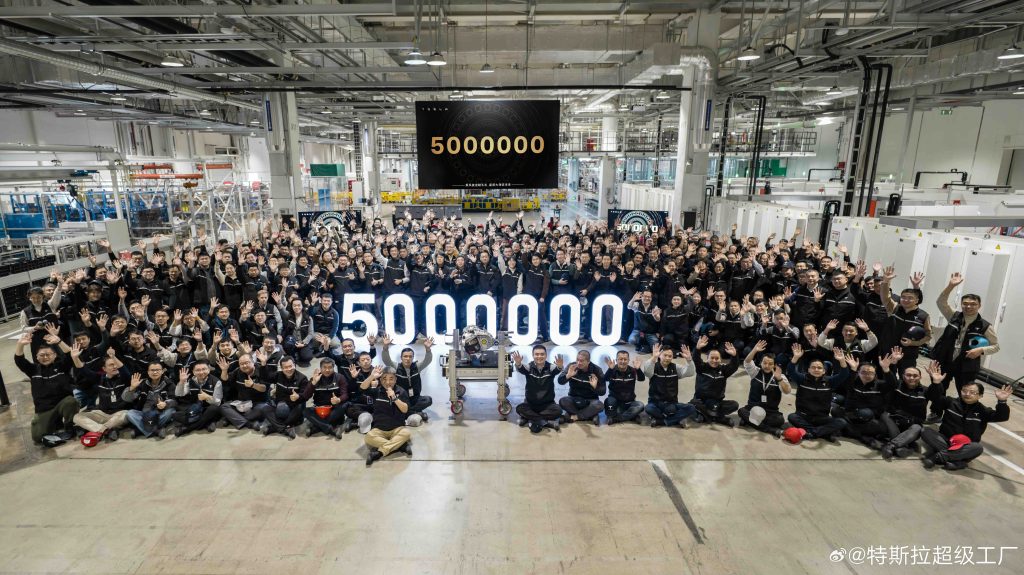
Throughout 2025, Giga Shanghai delivered 851,732 vehicles, representing a 7.08% year-on-year decline, according to data compiled by CNEVPost. Even so, recent months showed renewed momentum.
In December alone, Tesla China recorded wholesale sales of 97,171 vehicles, including domestic deliveries and exports, making it the company’s second-best monthly total on record, per data from the China Passenger Car Association. Retail sales during December reached roughly 94,000 units, up about 13% year over year.








